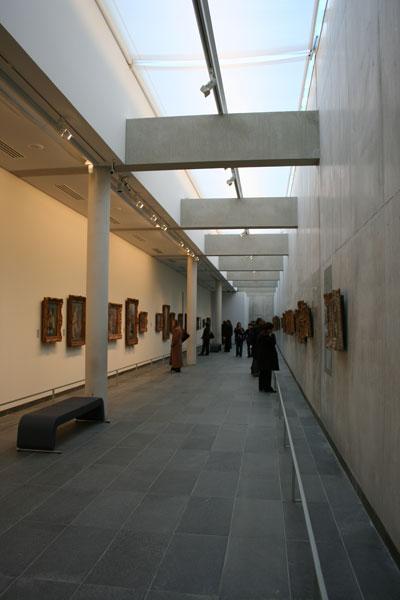Musée de l’Orangerie – Paris Museum

The museum is located in Place de la Concorde on the Seine river bank, just in the former Orangery of Tuileries Gardens. It is one of many historical tourist attractions in Paris.
Musée de l’Orangerie is known best for its collection of Claude Monet’s mural Water Lilies. However, it actually holds richer artwork collection. The museum is home to impressionist and post-impressionist paintings from numerous artists including Henri Matisse and Pablo Picasso.
Musée de l’Orangerie: The History
The museum was originally built by Firmin Bourgeois in 1852. However, he failed to see through the construction until finish and succeeded by Ludovico Visconti, who continued building the orange trees’ shelters in the garden of Tuileries. During its early years, the building was used for depositing goods, examination rooms, housing mobilized soldiers and other events by the Third Republic. One of the events held in the building was painting exhibition, which rang to its today’s role as a museum.
The role of the building changes into an administrative office in 1921. The office belonged to a fine art school which was connected to the French government’s modern art collections house.

Therefore, it was no wonder that Claude Monet donated his Nympéas series to be displayed there in 1922. Nymphéas is a large room sized canvases to commemorate the end of World War I. It was Georges Clémenceau who suggested that the painting series were donated to the Orangerie. However, the painting series were not opened to public until May 1927, five months after Monet’s death in December 1926.
Musée de l’Orangerie: Monet’s Water Lilies Collection
The Water Lily or originally known as Nymphéas was initially displayed in the ground floor of the museum. The enormous work represents meditation and peace as projected by the mural’s aura. It took four years for Monet to complete his grand masterpiece.

Monet’s Water Lilies mural is an important piece of art for Musée de l’Orangerie not because it is such a magnificent piece of artwork, but also because the moment the mural paintings came to the museum was the moment when the orangery became an independent art museum. Camille Lefévre was the architect who got the task to renovate the orangery so it could fit in the generous gift from the master painter.

Several months before August 1999, a special exhibition of Monet’s Water Lilies was held, displaying over 60 paintings of 250 that he worked on in the garden. After the renovation which spanned between 1999 until 2006, the Water Lilies has been displayed in the upper floor gallery until now.

Visiting Musée de l’Orangerie
The museum is available for visit everyday except Tuesdays from 9.00 am to 6.00 pm. It is also closed on 1st of May and 25th of December. Ticket box is open until 5.30 pm. The ticket price is €7.5 for adults and €5 for reduced price ticket. Free entrance is applied on first Sunday of every month.
To get to Musée de l’Orangerie, you can take Metro line 1, 8, or 12 and stop at Concorde station. If you choose to go by bus, take bus line 24, 42, 52, 72, 73, 84, 94 and stop at Concorde.
View Larger Map
Musée de l’Orangerie – Paris Museum Address
Jardin Tuileries, 75001 Paris, France
Phone +33 1 44 77 80 07
Website : musee-orangerie.fr
 Follow
Follow